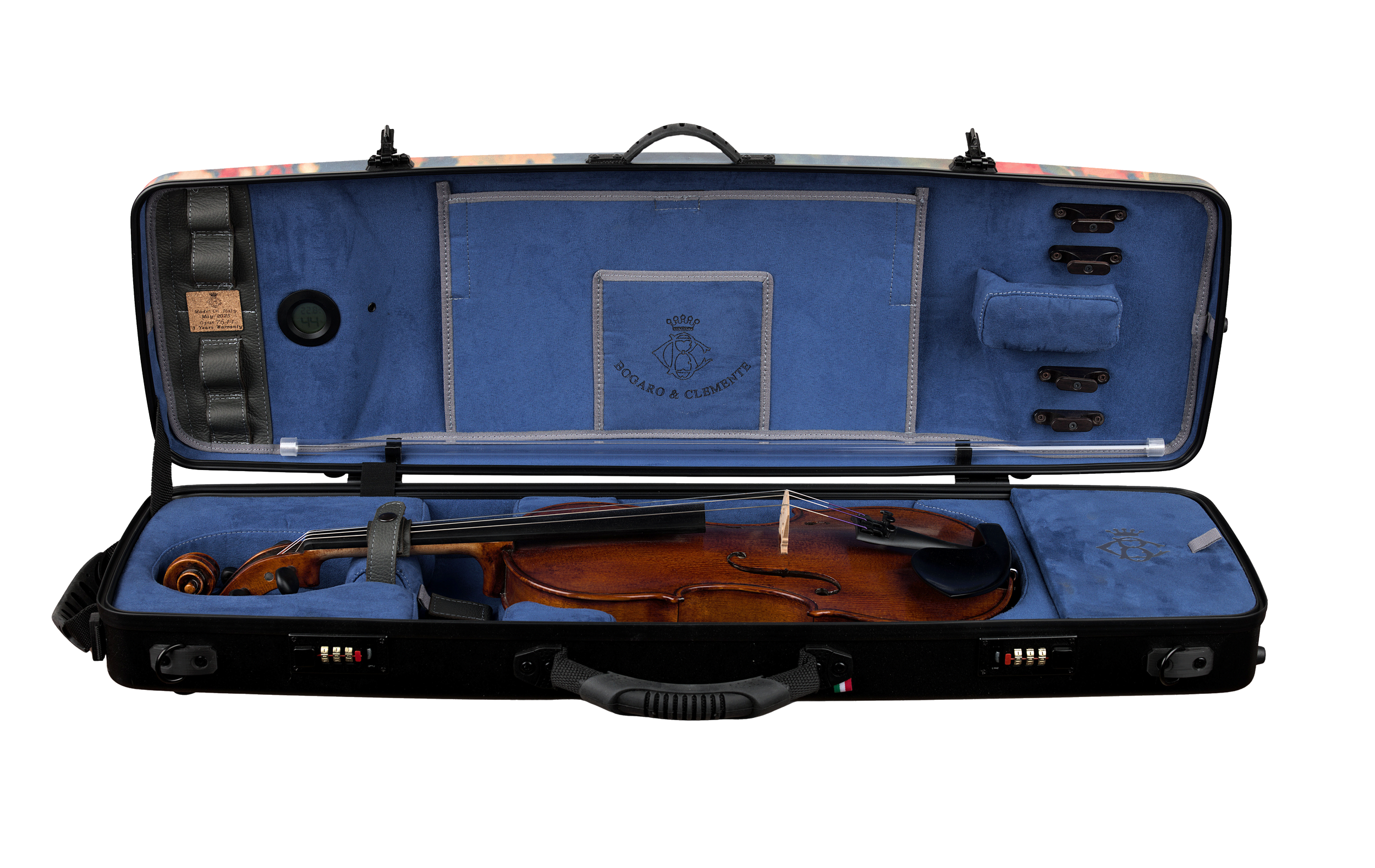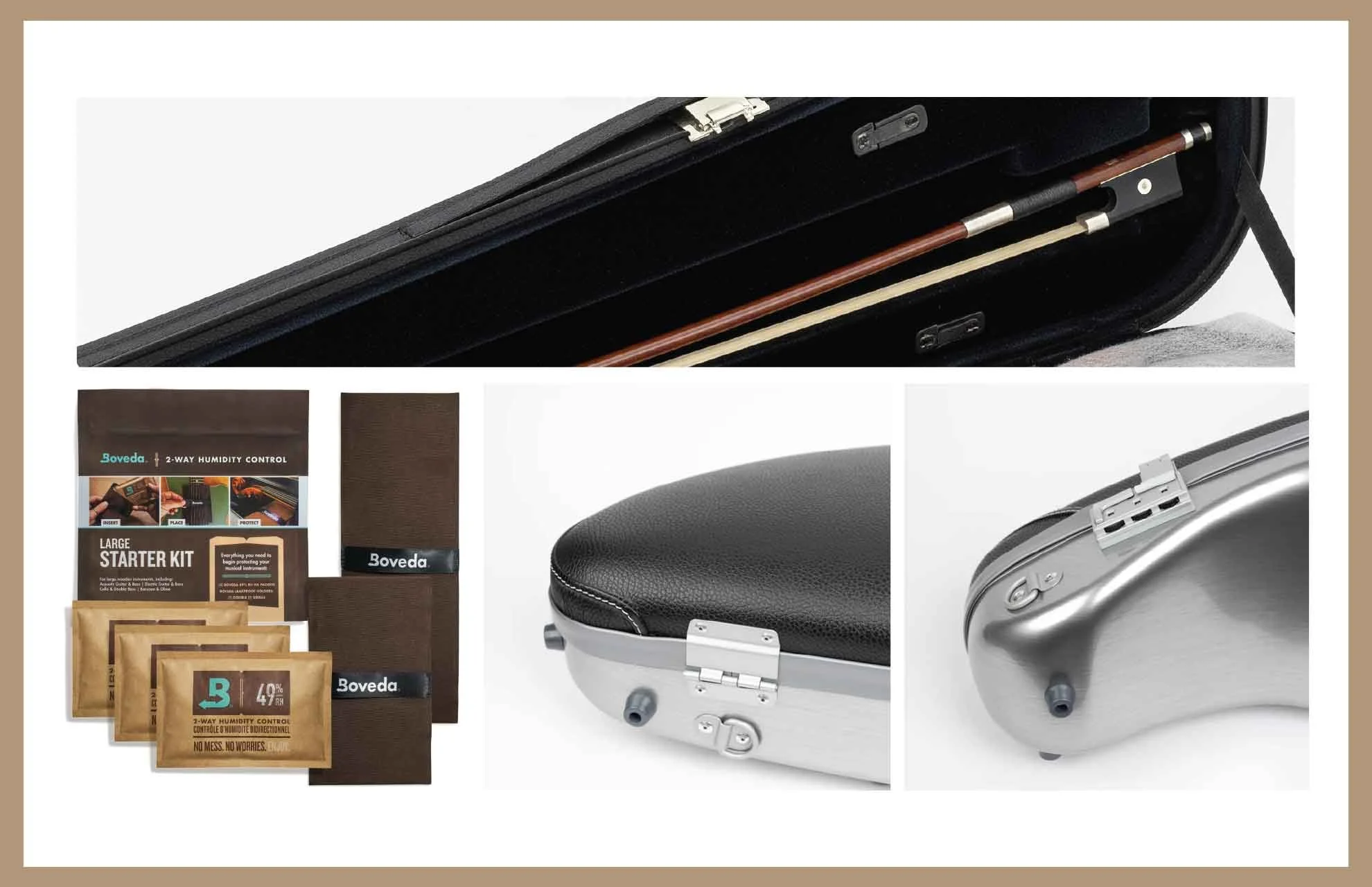Unboxing Your Violin and Safe Storage!
It never stops bringing joy to open up your case and behold the violin within. Nestled snuggly in its form-fit holder, resting safely on the padded suspension pillows, your new violin is ready for you to play.
Your case will keep your violin safe, but you do have to use it correctly to maximize the safety features. When you are not playing your instrument and it is resting within its case, it is fairly safe from damage, but even within a strong case, things can happen. Here are some tips to keeping your instrument safe all the time.
First…just make sure your violin fits properly. Most violins are roughly the same size, so there is little risk that your case will be the wrong size, but just in case, check out a couple things. First, there are two pillows at the neck and at the saddle ends of your violin…your instrument should be resting nicely on the pillows. These pillows suspend the violin safely within its case so that if there is an impact, the shock goes into the pillows and not directly into the backplate. When settled inside the case, it can have half a centimeter or so of wiggle, slide sideways, room…that is fine. An inch is too much, so if your violin wobbles a lot side to side, you’ll want to add some extra padding around her….socks work well for this.
Most cases have a neck strap of some sort that hold the violin neck firmly against the neck rest. This is important to prevent up and down bouncing. Be sure always to affix the strap!
While it is tempting to load up a case with all manner of items: photos, spare strings, small toys, tuners, rosin, candy etc. Be sure these loose items are securely tucked away inside the pocket and not roaming freely inside. Just as airline staff are always reminding passengers to stow away loose items before take off, you’ll want to apply that same vigilance to your case so that loose jetsam does not collide with your instrument.
The bow should also be securely set into the bow anchors in the lid of the case. The bow is held at two points: at the tip there is usually a bracket the bow slides into, and at the frog there is a bow spinner that goes between the hair and the stick. Once in place, turn the spinner so the bow is secure and unlikely to fall onto the violin. It is generally healthier for the bow to put it into the holder with the hair facing down (towards the case hinges) so that it does not “hang” on the hair. (and remember to loosen the hair before putting the bow away).
One of the greatest threats to an instrument between playing is humidity, or the lack thereof. Many cases have built-in hygrometers that measure the humidity of the air inside the case. When you open your case, especially in winter months, be sure to keep an eye on that dial…it should be at about 40%. If it’s lower, you’ll want to get some sort of in-case humidifier. We recommend the Boveda system and we do not recommend the saturated “snake” humidifiers that are inserted into the instrument.
And if your case has a blanket, you should use it as it protects the instrument from scratches from bows falling, debris inside the case and other abrasions. Lay the blanket so that the white satin side of the blanket faces the violin.
And don’t forget to latch and zipper the case! Never, never, never put the violin in a case and close the lid without at least closing the latch! If you do, you WILL eventually make the big mistake of grabbing your unhooked case and watching your violin tumble out onto the floor! It’s good income for our repair shop, but a common and costly mistake that is easy to avoid!
Finally, be mindful when taking your violin into an extreme temperature situation. The warm air inside a case will generally stay sufficiently warm for about ten minutes when brought into sub-freezing weather. A well insulated case, like a BAM high-tech or a Gewa Air, will retain the warmer temperatures for a little over an hour.
V. RICHELIEU VIOLA
We design and build violas for the next generation of violists.
We start at the beginning. We place small fractional violas designed and built in our Vermont workshop into small hands to play viola music as it was composed to play. We do not compromise, and neither should you.
Don’t play a converted violin. Play a real viola. Play a V. RICHELIEU™ small viola. Each V. RICHELIEU™ viola is uniquely crafted to make each piece of wood sing in full voice. The instruments are built in Vermont to combine over 80 years of experience with unique hand graduations and a beautiful hand-painted oil varnish of our own proprietary formulation.
Available as small as 11” to 16”. Real Violas for Aspiring Soloists!



